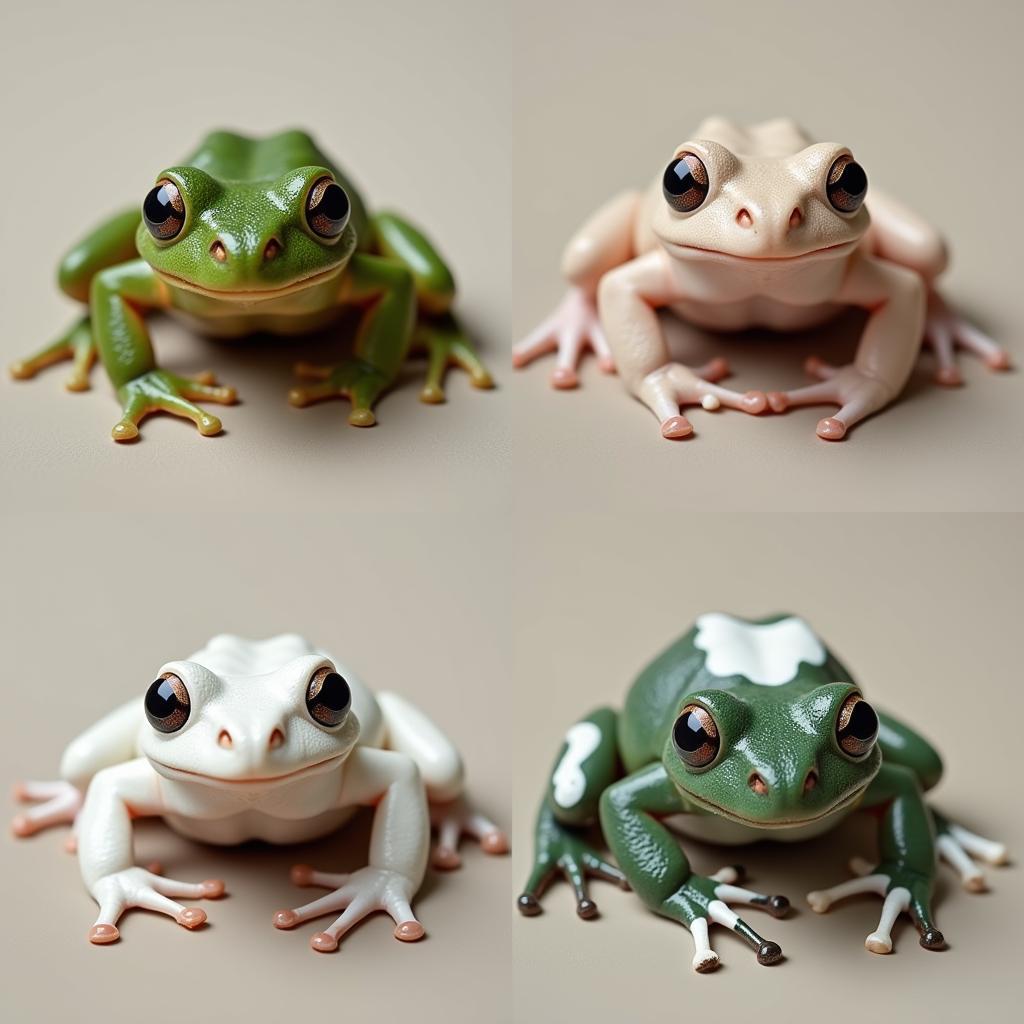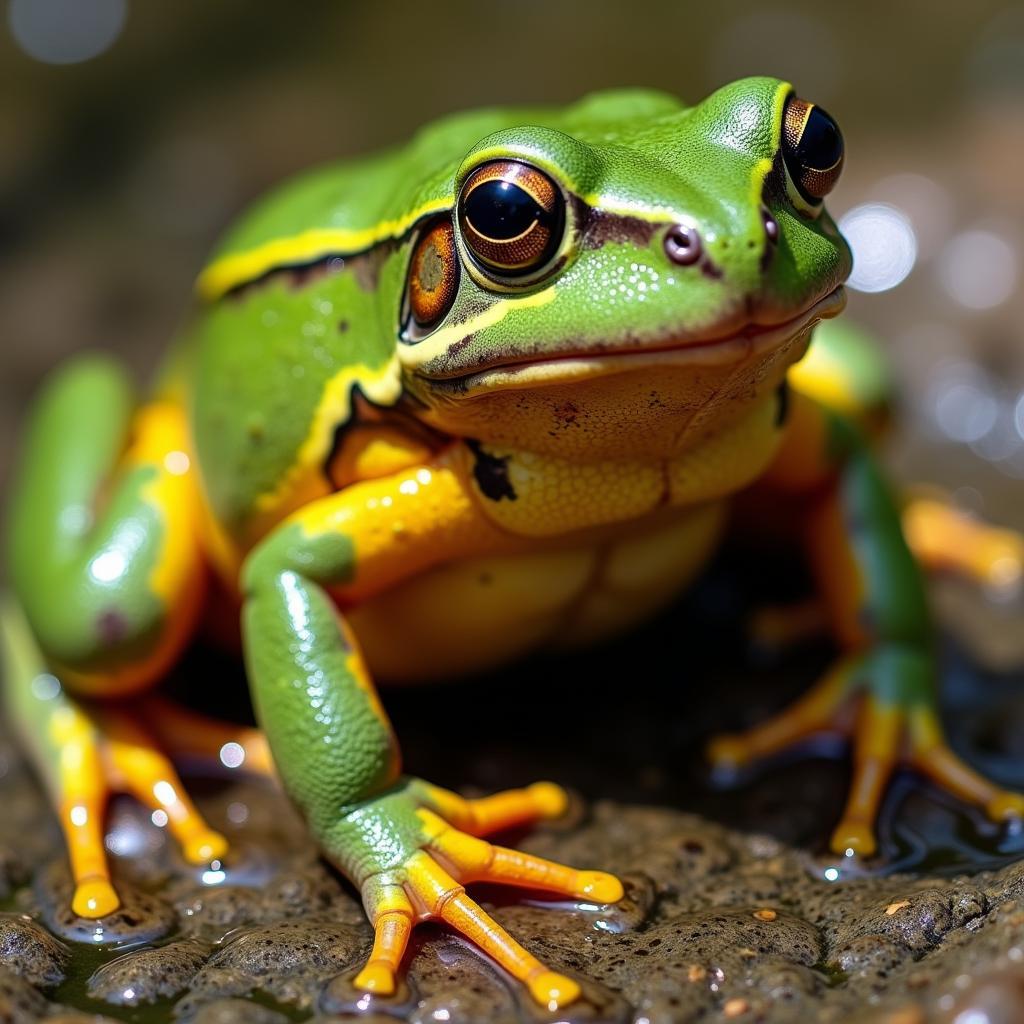African Clawed Frog Colors: A Guide to Their Stunning Variety
African clawed frogs, fascinating amphibians native to Sub-Saharan Africa, are known for their unique appearance and aquatic lifestyle. One of their most captivating features is their diverse range of colors and patterns, showcasing nature’s artistic flair. From earthy tones to vibrant hues, understanding African Clawed Frog Colors can provide insights into their genetics, health, and even their individual personalities.
Decoding the Palette: What Influences African Clawed Frog Colors?
African clawed frogs boast a surprising array of colors influenced by several factors:
Genetics: The Building Blocks of Color
Just like in humans, an African clawed frog’s genetic makeup plays a crucial role in determining its color. Different genes control the production and distribution of pigments, resulting in a spectrum of hues and patterns:
- Wild-Type Color: The most common color, often referred to as “olive green,” features a base color of green or brown with darker, irregular spots.
- Albino: Lacking melanin, albino African clawed frogs exhibit a pale pink or yellow body color with striking red eyes.
- Leucistic: These frogs possess reduced pigmentation, resulting in a pale or white body color with dark eyes.
- Piebald: This color variation presents patches of white or lighter coloration alongside the frog’s usual color pattern.
Environment and Diet: Nature’s Influence
While genetics lay the foundation, environmental factors can subtly influence an African clawed frog’s coloration:
- Light: Exposure to varying levels of light can impact pigment production, leading to slight color variations.
- Stress: Stressful conditions may temporarily darken a frog’s color.
- Diet: A nutritious diet rich in carotenoids found in certain insects and crustaceans can enhance the vibrancy of yellow and orange hues.
 African Clawed Frog Color Variations
African Clawed Frog Color Variations
Popular African Clawed Frog Colors: A Visual Guide
Let’s dive deeper into some of the most sought-after African clawed frog colors:
1. Wild-Type (Olive Green): A Classic Beauty
The wild-type color is a testament to the species’ natural camouflage. This coloration, featuring various shades of green or brown with dark spots, allows them to blend seamlessly into their murky, natural habitats.
2. Albino: A Striking Contrast
The absence of melanin in albino African clawed frogs results in a captivating contrast. Their pale pink or yellow bodies, coupled with bright red eyes, make them a visually arresting sight.
3. Leucistic: The Ethereal Charm
Leucistic African clawed frogs possess a captivating, ethereal beauty. Their pale or white bodies, often with faint markings, distinguish them from their more vibrantly colored counterparts.
4. Piebald: A Patchwork of Patterns
The piebald color variation adds a touch of whimsy to the African clawed frog’s appearance. These frogs showcase a unique blend of colors, with patches of white or lighter coloration interspersed with their usual patterns.
Beyond Aesthetics: Color as an Indicator
Beyond their visual appeal, African clawed frog colors can provide valuable insights into their overall well-being:
Health and Color: Telling Signs
Changes in color can sometimes signal underlying health issues. For instance, a sudden darkening or lightening of color can indicate stress or illness.
Personality and Color: Myth or Reality?
While not scientifically proven, some enthusiasts believe there’s a correlation between an African clawed frog’s color and its personality. For example, albino frogs are often perceived as more active and curious.
 African Clawed Frog with Healthy Color
African Clawed Frog with Healthy Color
Choosing Your African Clawed Frog: Color Considerations
When selecting an African clawed frog as a pet, color preference is a personal choice. However, it’s essential to prioritize the frog’s overall health and well-being over aesthetics.
“When choosing an African clawed frog, it’s crucial to look beyond the allure of color and prioritize the frog’s health and activity level. A reputable breeder can provide valuable insights into the frog’s lineage and ensure you’re selecting a healthy companion.” – Dr. Abena Kwame, Aquatic Veterinarian.
Conclusion: Celebrating Diversity in the Aquatic World
African clawed frog colors showcase the remarkable diversity within the animal kingdom. Understanding the factors that influence their coloration not only enhances our appreciation for their beauty but also allows us to provide better care for these fascinating creatures. Whether you’re drawn to the classic wild-type or the striking contrast of an albino, African clawed frogs continue to captivate with their unique charm and aquatic grace.
